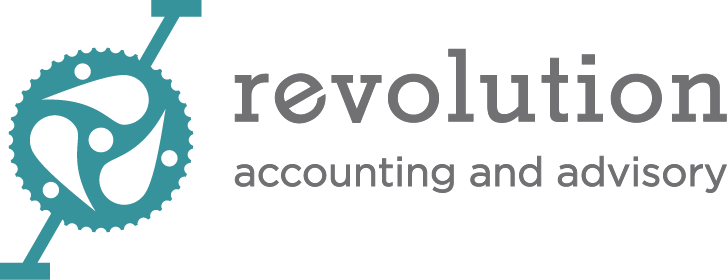Sage Intacct Release 1 is Coming Your Way
On Friday, February 19, Sage Intacct will push out Release 1 for 2021, which we’ll call R1 from here on out because we’re casual like that.
Every quarter, Sage Intacct is upgraded automatically for all customers. This would be scary if we were in the old ERP world, where upgrades took weeks or months to plan and roll out. But nope, now we just open Intacct on Monday morning (who are we kidding, Saturday morning. It’s February.) and presto! There are all these new capabilities in our financial apps. Like what, you ask? Well, allow me to name just a few:
Core Applications
Checklists! This new feature will keep evolving over the next several releases, but for now, checklists can be created and managed to assign tasks to specific users.
User will receive email notification (controlled by their user preference settings, as with other notifications) and the checklist can be in their dashboard, too.
Clicking on a checklist item will take the user directly to the place in Intacct where the given task can be accomplished.
The checklist owner will receive email notifications and dashboard updates about task progress, so they can keep the team coordinated. Like. A. Boss.
General Ledger
GL Outlier Detection has been talked about and demoed at Sage Intacct Advantage and other events, and finally in R1 this groundbreaking functionality is a part of the core General Ledger of Intacct. It’s a machine learning function that discovers trends in our accounting and then flags transactions that don’t seem to fit with the patterns. This proactively helps to prevent errors from finding their way to the financial statements – and it learns and gets better at it over time. Does that sound cool and also expensive? Well, you’re half-right. GL Outlier Detection is included for all Sage Intacct customers at no additional charge.
GL journal approval now enables default delegation to an individual or a group. This isn’t a big deal until it is. Let’s say – just hypothetically – you are in year-end, and there’s a pandemic, so everybody is working from home, and there’s also an ice storm and half the team hasn’t had power for days, but these year-end GL journal entries still need to get approved… Well, in that totally unlikely scenario, wouldn’t it be great if journal approvals had been delegated to a group of other users?
Cash Management
Electronic payments (early adopter)! Yes, Sage Intacct is rolling out native electronic payments. Using payments platform CSI, Intacct will enable ACH, remote-printed checks, and virtual cards to speed up payments to your vendors. While this release is for approved early adopters only, it should be in general availability in the spring.
Bank reconciliation matching rules enable the system to auto-match lump sum deposits from the bank to multiple postings in Sage Intacct, making life so much easier for the cash accountant.
Additional segregations of duties in Bank Feed transaction processes support healthy internal controls.
Multi-Entity Usability
Now all new companies need to be set up as Multi-Entity Share companies, even if they have only one entity. To make that friendly for single-entity customers, it’s now easy for us to enable top-level-only access to users, so they can transact the way they want, without having to worry about whether they are working in the correct level.
Domestic Consolidation is here. This is an add-on product (i.e., not free) that allows companies with high inter-entity transaction volumes to effectively control the consolidations of their books when they are using a SINGLE base currency. (Sage Intacct has long offered a Global Consolidation product for customers with multiple base currencies. This is the simpler, more affordable version.)
Projects
With R1, Sage Intacct now facilitates inclusion of attachments to Project invoices. Although it’s been possible in prior releases to include attachments to outgoing invoices using a custom email template, it’s still a semi-manual process. With this option, customers subscribed to Project Billing can select supporting documents (think timesheets and expense reports) to automatically add to project invoices.
Inventory
FIFO items can now have Lot and Bin or Serial Number tracking, so accounting can have their valuation method of choice and warehouse ops can keep track of where the inventory is sitting. Win/win!
The new CSV import to Build Kits is perfect for those customers who stock prebuilt kits and bundles.
Bin quantities and other inventory attributes can now be viewed right in the transaction window without having to run a separate report.
There is a new Basic Mode for Maintain Inventory Valuation.
Reporting
There are more prebuilt analytics in R1 for Interactive Visual Explorer (IVE) and Interactive Custom Report Writer (ICRW), with new IVE boards for projects and timesheets and ICRW reports on customer profitability, or active sales orders. Use these as delivered or copy them and customize the heck out of them for your own uses.
New prebuilt Time-Related Attributes for IVE and ICRW enables advanced reporting on months, quarters, or years in these tools without doing all kinds of calculative gymnastics.
Sage Intacct has packed a lot of goodies into R1, so I’m not going to pretend this is close to a comprehensive list. It’s more like a summary of the summary. Check out this short video to see a little more detail.
When I look through all the new options, it’s clear that, like Revolution Accounting, Sage Intacct really drills into many little things that will make life easier for the accounting geeks of the world, and heck, maybe even fun? That’s our goal in a nutshell: to make the working day of all accountants easier, more fun, and with any luck, shorter!
